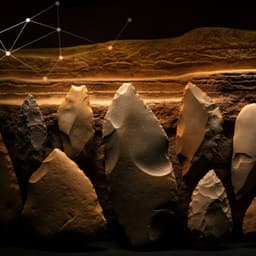
Space Sciences
DEEP LEARNING UNIVERSAL CRATER DETECTION USING SEGMENT ANYTHING MODEL (SAM)
I. Giannakis, A. Bhardwaj, et al.
Discover an innovative approach to crater detection in planetary science, developed by Iraklis Giannakis, Anshuman Bhardwaj, Lydia Sam, and Georgios Leontidis from the University of Aberdeen, using Meta AI's powerful Segment Anything Model (SAM). This method simplifies and enhances the identification of craters across various celestial bodies without the need for retraining, showcasing SAM's potential for revolutionizing planetary research.
~3 min • Beginner • English
Related Publications
Explore these studies to deepen your understanding of the subject.







